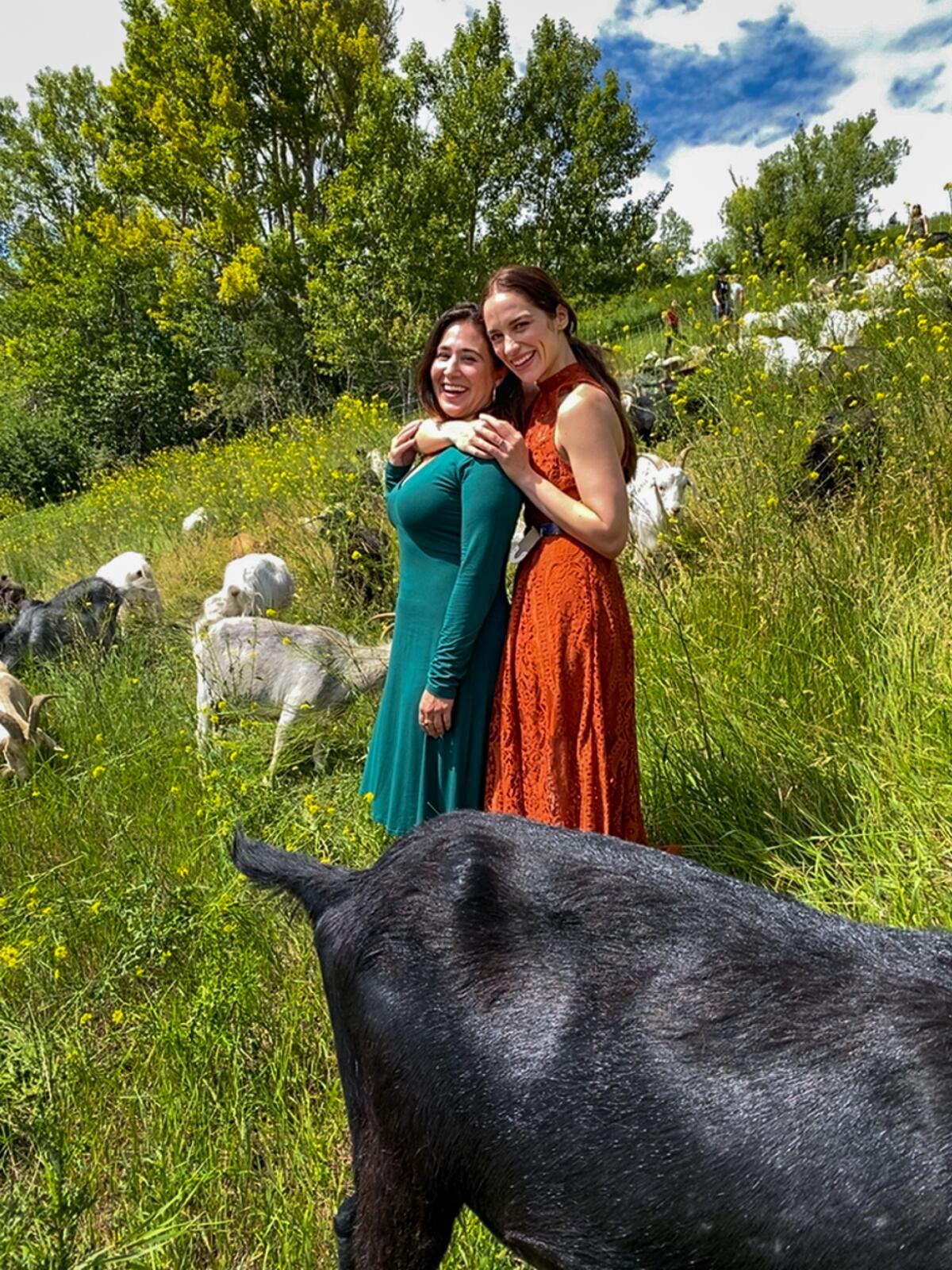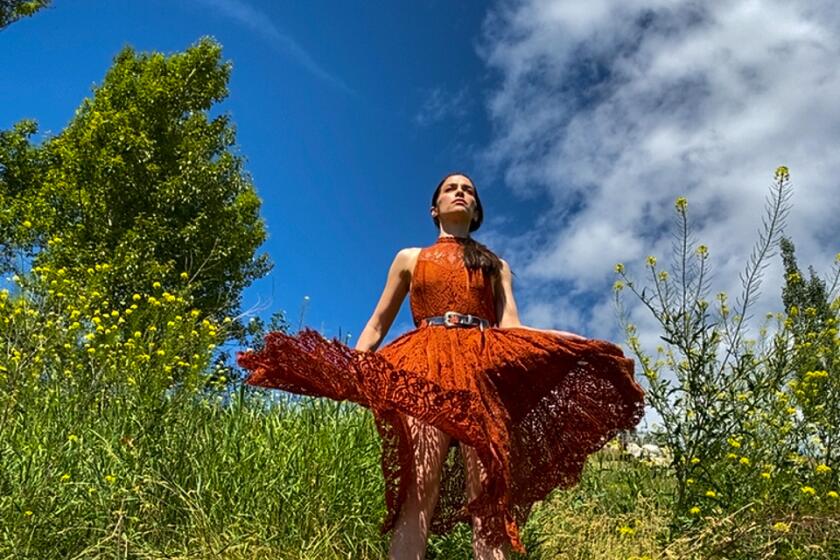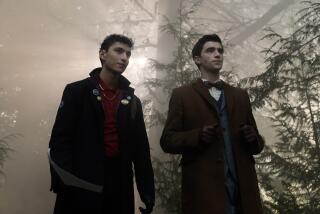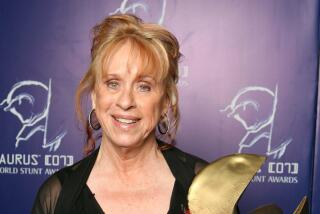Commentary: ‘Wynonna Earp’ came at a dark time for queer women on TV. Then it changed the game
The spring of 2016 might have been remembered solely as a dark time for queer women on television. An overwhelming number were being killed off in scripted TV, often simply to advance their straight counterparts’ storylines. Even in the context of TV’s long history of offing LGBTQ characters, the numbers were grim: according to a 2016 tally by GLAAD, more than 25 queer women died on scripted TV and streaming shows in that year alone.
Then came “Wynonna Earp.”
Created by Emily Andras, Syfy‘s supernatural western features a gunslinging demon hunter — Wynonna Earp (Melanie Scrofano) — and her close-knit found family, including her half-angel sister, her brave town-sheriff bestie and her nearly 200-year-old sometimes lover.
Loosely based on a comic book series by Beau Smith, “Wynonna Earp” follows the quippy great-great-granddaughter of the famed lawman Wyatt Earp as she returns to her hometown of Purgatory and activates a family curse that tasks her with sending resurrected demons back to hell with her ancestor’s magical gun.
It’s clear that despite her initial reluctance, Wynonna is willing to take on the responsibility, if only to keep her younger sister Waverly (Dominique Provost-Chalkley) safe. The siblings and their complicated bond have allowed the campy horror series to pack emotional punches above its weight for four seasons.
But it’s the show’s treatment of another relationship that has made it so groundbreaking and meaningful, particularly to LGBTQ viewers: Waverly’s romance with town sheriff Nicole Haught (Katherine Barrell).
Season 4 of Syfy’s “Wynonna Earp” has been nearly two years in the making — thanks to financial woes, its passionate fan base and the COVID-19 pandemic.
The series established Nicole’s attraction to Waverly the moment the then-deputy was introduced in its second episode, and although Waverly had a boyfriend at the time, it was easy to see that the attraction wasn’t exactly unrequited.
But in the environment “Wynonna Earp” entered when it premiered in April 2016, Andras understood viewers’ anxieties about becoming invested in a queer relationship on TV — and promised viewers early in the show’s run that her queer characters would survive.
While the promise alone was meaningful enough, how she kept it has been even more significant.
In the Season 1 finale, Nicole was shot to distract the Earp sisters from stopping a villain’s big plans. After years of watching queer women on TV die of gunshot wounds, particularly on genre shows, seeing Nicole survive because she was wearing a bulletproof vest was revelatory. It was an acknowledgement of — and a direct rebuke to — a hurtful trope. The move helped “Wynonna Earp” earn the trust and devotion of its fan base and cement its place in LGBTQ TV history.
Andras and the show’s cast have been vocal about how much they cherish Waverly, Nicole and their relationship, and that care is manifested within the show itself. The characters have been authentic and relatable, and their relationship affectionate and passionate, without ever falling into the voyeuristic male gaze that lesser shows still seem unable to shake. Plus, Waverly and Nicole’s relationship has been the only committed, long-running romance of the series.
Melanie Scrofano on her journey to directing a Season 4 episode of “Wynonna Earp.”

Despite the bumpy road, LGBTQ visibility on TV has been on an upward trend in recent years, with more inclusive and meaningful stories being told across the medium. That has been in stark contrast to the real-life prevalence of anti-LGBTQ violence as well as moves by state and federal governments to limit LGBTQ protections and enact discriminatory policies targeting the trans community in particular. Even as a queer person living in a socially liberal city with an expansive LGBTQ community, I can’t say I’ve always felt safe.
A television show obviously cannot protect you from actual harm, and being able to find solace in entertainment is itself a mark of privilege we should not forget. But “Wynonna Earp‘s” deft handling of Waverly and Nicole’s relationship — often referred to by the portmanteau “WayHaught” — has offered comfort, safety, to many of us in that community, regardless of the peril the characters regularly find themselves in thanks to the series’ various monsters.
One need only look at how hard “Wynonna Earp’s” fans have fought (and continue to fight) on behalf of the show to understand how important that feeling has been during the last five years.
While it might not have gotten everything right (that’s a difficult feat for any television show), “Wynonna Earp” has consistently treated its queer characters and storylines with care, all the way down to Friday’s finale: “Wynonna Earp’s” four-season run on Syfy will conclude with the much anticipated WayHaught nuptials, which the cast has teased as something special for fans.
And how could it not be? When a television show makes clear that its LGBTQ characters matter, it helps its LGBTQ viewers feel they matter too. There’s no better way to rewrite history than that.
‘Wynonna Earp’
Where: Syfy
When: 10 p.m. Friday
Rating: TV-14 (may be unsuitable for children younger than 14)
More to Read
The complete guide to home viewing
Get Screen Gab for everything about the TV shows and streaming movies everyone’s talking about.
You may occasionally receive promotional content from the Los Angeles Times.








